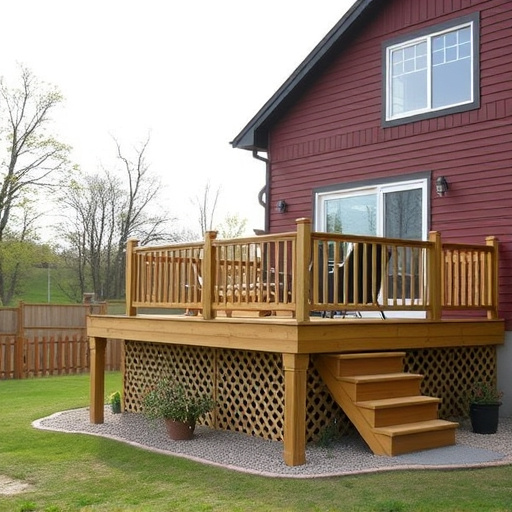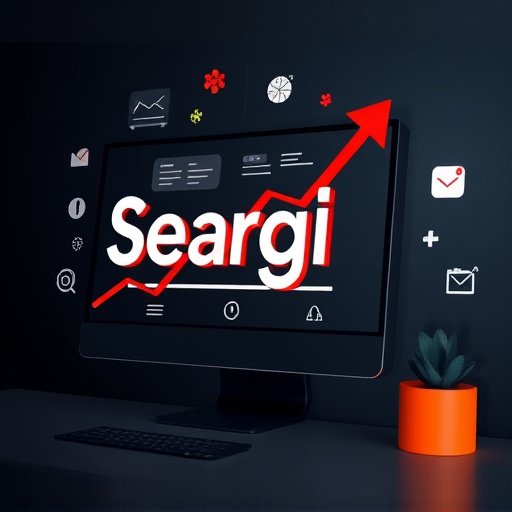Scalable web design is essential for modern websites' success, accommodating mobile users (over 50% of internet traffic) through responsive techniques like flexible grids and modular coding. It optimizes site performance for both users and search engines, enhances user satisfaction with faster load times and navigation, and allows easy integration of new features. In competitive markets like Arlington or Dallas, scalable design, combined with SEO strategies from Plano-based companies, improves online visibility and user engagement. Developers should adopt modular strategies and cloud-based technologies for efficient content delivery and load balancing, ensuring the website can handle traffic spikes while maintaining swift loading times and enhanced experiences.
In today’s digital landscape, websites need to adapt and scale to accommodate growing user demands and evolving technologies. This is where scalable web design steps in as a crucial strategy. Understanding and implementing this approach ensures your website performs optimally, regardless of traffic spikes or new features. By focusing on flexible layouts, efficient code, and content-centric architecture, you create a dynamic online presence that captivates users and keeps them coming back. Let’s explore why and how scalable web design matters for modern websites.
- Understanding Scalable Web Design: The Basics
- Benefits of Implementing a Scalable Design Approach
- Strategies for Achieving Scalability in Web Development
Understanding Scalable Web Design: The Basics

Scalable web design isn’t just a trendy buzzword; it’s an essential concept for modern websites to thrive in today’s digital landscape. At its core, scalable design ensures that a website can adapt seamlessly to various screen sizes and devices, from desktops to tablets to smartphones. This flexibility is crucial, given that more than 50% of internet traffic now comes from mobile devices, as per recent statistics. A site that doesn’t scale properly risks frustrating users, leading to higher bounce rates and lower search engine rankings.
This approach involves using responsive design techniques, like flexible grids and media queries, to create layouts that adjust content placement based on screen dimensions. It also emphasizes modularity in coding, allowing for easy addition or removal of features without disrupting the core functionality. Moreover, keyword research services and SEO audit tools play a vital role in understanding user behavior and optimizing the site’s performance for both users and search engines, ensuring it remains competitive in the digital marketing Dallas space.
Benefits of Implementing a Scalable Design Approach

Implementing a scalable web design approach offers numerous advantages for modern websites, ensuring they remain efficient and effective as user demand grows. One of the key benefits is enhanced performance. As websites gather more traffic and content, a scalable design adapts to accommodate this growth without compromising speed or functionality. This means visitors experience faster load times and smoother navigation, leading to improved user satisfaction and lower bounce rates.
Moreover, scalability promotes flexibility and longevity. A website designed with scalability in mind can easily adapt to changing business needs and evolving technologies. For instance, a scalable design allows for the seamless integration of new features, content updates, or even the transition from a desktop-only platform to a mobile-first approach. This adaptability is crucial for businesses, especially those in competitive markets like Arlington or Dallas, where staying relevant and visible online through dynamic web design can be achieved with an SEO company Plano, ultimately contributing to better search engine rankings and increased online engagement.
Strategies for Achieving Scalability in Web Development

Achieving scalability in web design is no longer a nice-to-have; it’s a necessity for modern websites. To create scalable web designs, developers must adopt several strategies from the outset. One key approach is to break down complex tasks into smaller, manageable modules that can be easily updated and maintained. This modularity ensures that changes don’t disrupt the entire site, facilitating easier growth and adaptation over time.
Additionally, leveraging cloud-based technologies offers significant advantages for scalability. Services like Google Business Profile optimization play a crucial role in local SEO services, enabling efficient content delivery and load balancing across multiple servers. Integrating responsive design principles is another vital strategy to ensure your website performs optimally on various devices and screen sizes. Pairing these techniques with robust backend infrastructure, including scalable databases and caching mechanisms, prepares your site for traffic spikes while maintaining swift loading times and enhanced user experiences.
Scalable web design is no longer a luxury—it’s a necessity. As websites become the central hub for businesses and communities, ensuring they perform optimally under any load is crucial. By adopting a scalable design approach, developers can create dynamic, responsive sites that adapt seamlessly to changing user demands, offering a seamless experience regardless of traffic spikes or device variations. Investing in scalable web design isn’t just about future-proofing your online presence; it’s about fostering growth, enhancing user satisfaction, and staying competitive in today’s digital landscape.














